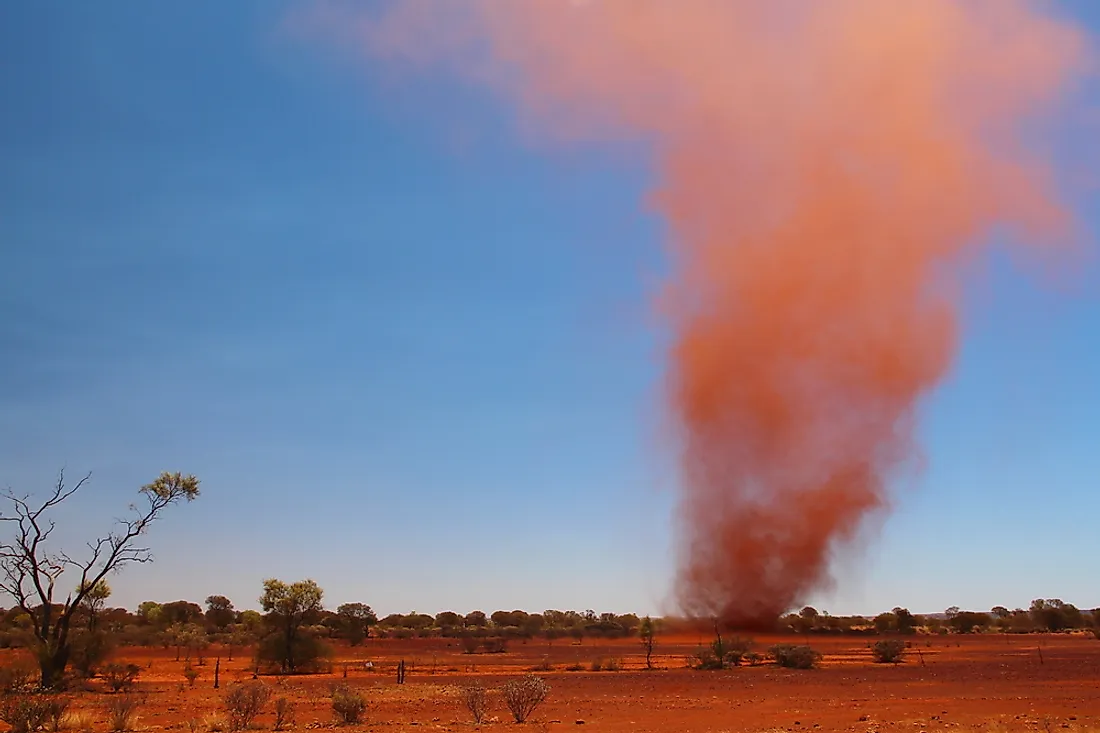How Many Types Of Whirlwinds Are There?

Whirlwinds are climatic phenomena in which vortices of wind form due to the turbulence and instabilities created by flow gradients and heating. A whirlwind can occur anywhere on earth irrespective of the season. A wide range of vortices occurs in the atmosphere ranging from the small eddies to large tornadoes and firestorms. The rotational axis of the whirlwind is vertical, however, it can be inclined. In smaller whirlwinds, the direction of rotation can either be anticlockwise or clockwise while in bigger ones it is determined by external forces.
Great Whirlwinds
Like tornadoes, great whirlwinds are formed by a supercell thunderstorm or any other strong storm. When a storm begins to spin, it reacts with higher altitude winds resulting in the formation of a spinning funnel of air. A cloud is formed above the whirlwind making it visible. Some of the major whirlwinds include:
Tornadoes
Tornadoes are rapidly spinning columns of air that extend from the cumulonimbus cloud or cumulus clouds to the ground. Most tornadoes have a diameter of about 250 ft and a speed of roughly 110 miles per hour. These tornadoes travel for some few miles before disappearing. Strong tornadoes have a maximum speed of approximately 300 miles per hour with a diameter of about 2 miles and can move on the ground for over 62 miles.
Waterspouts
Waterspouts are columns of cloud-filed winds spinning over a lake or an ocean. There are two types of waterspouts: tornadic and fair-weather waterspouts. A tornadic waterspout is a tornado which forms over a body of water or moves from land to sea. Tornadic waterspouts have the same characteristics as the regular tornadoes. A fair-weather waterspout develops at the base of a developing cumulus cloud but is not associated with a thunderstorm.
Lesser Whirlwinds
Lesser whirlwinds develop when a local wind begin to rotate on the ground and form a funnel. These funnels move for a small distance on the ground while picking up snow or dust which makes them visible. Lesser whirlwinds are usually accelerated by the winds which created them. Some of the minor whirlwinds include:
Steam Devils
Steam devils are small, weak whirls formed over wetland or water which draw fog into their vortices making them visible. A steam devil forms over oceans or lakes during the cold-air outbreaks while the water is still warm. They can also be created on a geyser basin especially in warm weather due to the extremely high water temperature.
Fire Whirls
Fire whirls are whirlwinds which are stimulated by fire. They are usually made up of ash or flames. Fire whirls occur when the turbulent wind and extreme rising heat conditions merge to create a rotating eddy of air. The swirls of air then contract into a tornado-like whirlpool that sucks in combustible gases and burning debris.
Other Whirl Winds
Other minor whirlwinds include snow devils, dust devils, leaf devils, gustnadoes, and shear eddies among others.
Duration of Whirlwinds
Minor whirlwinds are short-lived since the wind that creates them only last for some few second while major whirlwinds continue for a very long time because they are formed by powerful winds. The rotation of minor whirlwinds is disrupted when it encounters an obstacle. Interrupting a strong tornado is very hard although not impossible.











